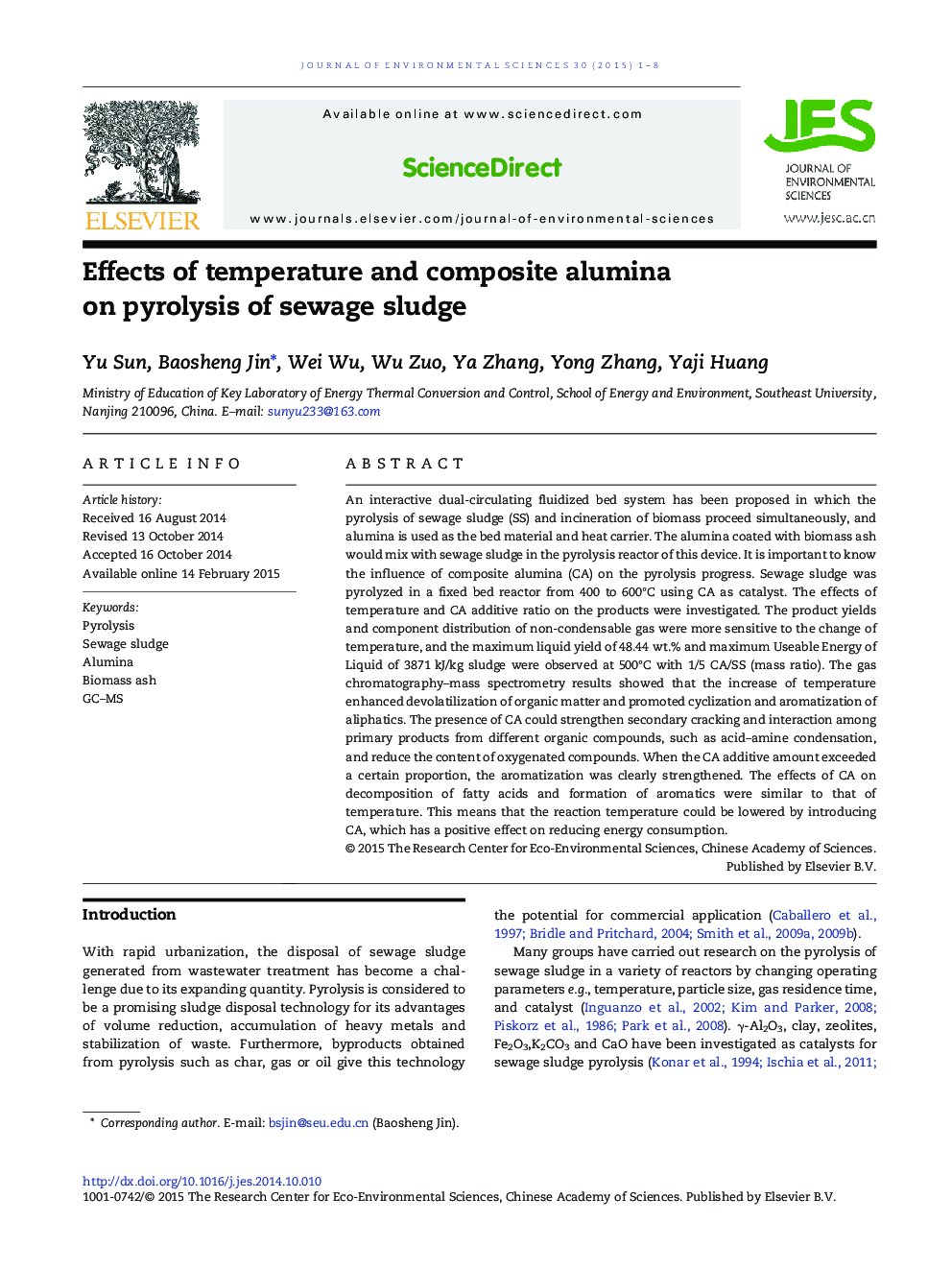| کد مقاله | کد نشریه | سال انتشار | مقاله انگلیسی | نسخه تمام متن |
|---|---|---|---|---|
| 4454102 | 1620823 | 2015 | 8 صفحه PDF | دانلود رایگان |
An interactive dual-circulating fluidized bed system has been proposed in which the pyrolysis of sewage sludge (SS) and incineration of biomass proceed simultaneously, and alumina is used as the bed material and heat carrier. The alumina coated with biomass ash would mix with sewage sludge in the pyrolysis reactor of this device. It is important to know the influence of composite alumina (CA) on the pyrolysis progress. Sewage sludge was pyrolyzed in a fixed bed reactor from 400 to 600°C using CA as catalyst. The effects of temperature and CA additive ratio on the products were investigated. The product yields and component distribution of non-condensable gas were more sensitive to the change of temperature, and the maximum liquid yield of 48.44 wt.% and maximum Useable Energy of Liquid of 3871 kJ/kg sludge were observed at 500°C with 1/5 CA/SS (mass ratio). The gas chromatography–mass spectrometry results showed that the increase of temperature enhanced devolatilization of organic matter and promoted cyclization and aromatization of aliphatics. The presence of CA could strengthen secondary cracking and interaction among primary products from different organic compounds, such as acid–amine condensation, and reduce the content of oxygenated compounds. When the CA additive amount exceeded a certain proportion, the aromatization was clearly strengthened. The effects of CA on decomposition of fatty acids and formation of aromatics were similar to that of temperature. This means that the reaction temperature could be lowered by introducing CA, which has a positive effect on reducing energy consumption.
The existence of CA could strengthen secondary cracking and inter-action among primary products from different organic compounds, such as acid–amine condensation, and reduce the content of oxygenated compounds. When the CA additive amount exceeded a certain proportion the aromatization would be obviously strengthened.Figure optionsDownload as PowerPoint slide
Journal: Journal of Environmental Sciences - Volume 30, 1 April 2015, Pages 1–8
